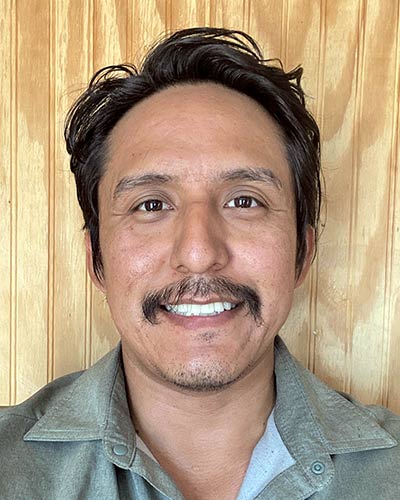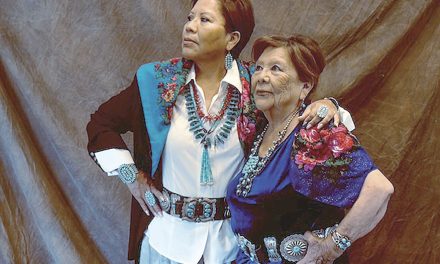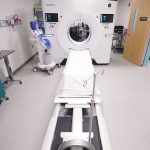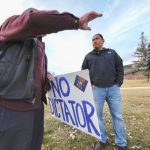
Reporter’s Notebook | ‘The people would help Narbona’
During my hiring interview with Navajo Times Publisher-CEO Tom Arviso and Editor Duane Beyal, I was asked what stories I preferred to cover. I responded, “Conflict.”
“Conflict? Like protests?” one of them asked.

Cyrus Norcross
I nodded my head, and echoes of past conflicts I have experienced came racing to me.
Watching two bullet-riddled teenage boys, who were no older than me at 19, take their last breaths in Baghdad. Being blown up by C4 – plastic explosives – as I was walking toward a gated building in the Paktika Province of Afghanistan, my squad thought I was dead because I was knocked unconscious for roughly 45 seconds.
Witnessing a police officer shoot a horse with large rubber bullets that proceeded to trample over people while I was at the Standing Rock protest of 2016 in North Dakota.
The dark memories that I never bring up or mention to anyone fade away: “Yeah, like protests, “ I said.
I enjoy conflict stories because it is the only time I truly feel alive. The bond that is created between people during fighting is hard to break. I yearned to have that connection again with others, but reporting for the Navajo Times, I found myself on a path I thought was not possible.
Beyal looked at Arviso and said, “His photos aren’t bad, and we could always use another photographer. I say let’s give him a shot.”
So, on June 14, 2021, I was hired on to the Navajo Times editorial staff as a full-time photographer on a 90-day probation.
My path of becoming a journalist is unique. Most journalists have unique stories that got them into the media world.
My working background comprises working in the U.S. Army for six years and doing three deployments overseas while in the special operations unit, 75th Ranger Regiment. Taking photos for the college newspaper, “The Daily Wildcat,” located in Tucson, where I covered news and sports related to the University of Arizona. And training British Royal Air Force pilots in surveillance, recon, and building a network on terrorist organizations in an undisclosed location. Not your typical journalism resume.
I got sober in early 2019, and life continues to get better every day. If you told me that the healing process would improve while working for the Navajo Times, I would have looked at you crazy. But it did. I unintentionally received life lessons from my co-workers and the Navajo people.
I have covered stories that involve speaking with state senators, talking with President Jonathan Nez, sitting down with Council delegates, talking with coaches, interviewing kids in sports, and working artists.
But the stories that impact my life are sad stories. Many of the sad stories I covered, people cry and tell me about suicide, rape, murder, kidnapping, addiction, depression, child molestation, and no direction in life.
It is these stories that I found myself drawn to because I understand what the people are going through. I have been in their shoes, and I know what it feels like to be hopeless.
Every day I go to another story, I realize how many people in the Navajo Nation are sad.
Sad because their world has been torn apart and their dreams shattered. Sad because of what happened to them as children, no one wants to listen. Sad because their loved one took their own life. Sad because a family member was killed.
I will admit it does take a toll on my mental well-being, but there is always a lesson to be taken away from each story that gets me stronger mentally.
I won’t get into the details of each lesson, but I will say that every person has an internal conflict that they are dealing with every day.
The people tell me some of the most traumatic times of their lives and trust me to be their voice, to publish their stories. By doing this, each person has allowed me to look at my inner conflict and approach it differently every day. In many ways, my people are helping me heal from my inner conflict.
My dad always told me the following as I grew up: “Son, always remember who you are. You are a descendant of Narbona. Always remember he would put the people first, and in return, they would help him. Always help our people.”
As a kid, I figured it was fighting for the people, which is correct, but that is far from it. It means that you must care for your people, hear them out, be their voice, and let them guide you.
With the Navajo Times, I have created a strong connection with my people, not through a conflict of fighting, but healing. My people have given me the strength to create a strong bond with my inner self and each person has helped me heal and feel truly alive.
This was what my father meant when he said, “The people would help Narbona.” By listening to the people and helping them, they inadvertently helped him heal over his conflicts.
So long as my people are struggling, I will be out there hearing them out, sharing their stories, and being their voice when no one else will. I believe in each of them to overcome their conflicts, just as they believe in me.
I look forward to this upcoming New Year and the new lessons it will teach me. Most of all, I look forward to the next story that my people will allow me to be part of.
As one person from Dennehotso told me, “Make us all proud out there.” I intend to do just that, one conflict at a time.








 Highway 264,
Highway 264, I-40, WB @ Winslow
I-40, WB @ Winslow